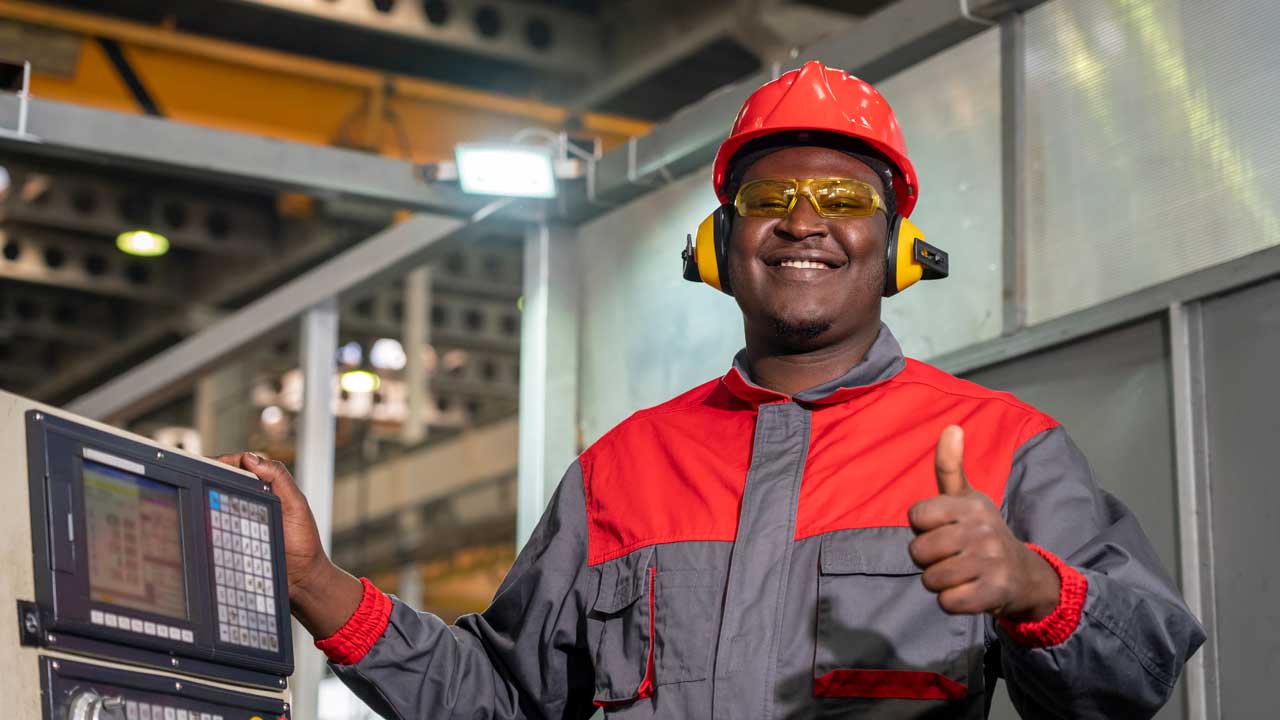OSHA Compliance in Manufacturing: A Comprehensive Guide to Ergonomic Standards
OSHA compliance is a foundational requirement for maintaining a safe and efficient manufacturing environment. At Ergotronix, we can help you understand how federal regulations shape workplace ergonomics and why meeting these standards benefits both employers and employees. Then, learn how our equipment can help protect your workers, reduce costs, and foster a culture of safety.
Why OSHA Regulations Matter for Workplace Ergonomics
OSHA regulations serve as a framework that helps businesses identify potential risks before they escalate into safety incidents. These rules guide the development of ergonomic solutions that minimize repetitive strain and reduce the risk of musculoskeletal disorders. When properly followed, OSHA standards result in smoother workflows, enhanced employee well-being, and fewer compensation claims.
The Link Between OSHA Compliance and Workplace Safety
Effective OSHA compliance is about creating a culture where every worker feels protected. When employers actively invest in meeting these standards, they demonstrate a commitment to preventing accidents and injuries. Such an atmosphere encourages employees to speak up about potential hazards, accelerating the resolution of issues. Over time, this proactive approach leads to stronger morale and a more stable workforce.
Beyond safety, compliance can also contribute to operational efficiency. Many ergonomic improvements, such as better tool design and workstation layouts, streamline tasks and minimize downtime. This dual benefit—reducing injuries while enhancing productivity—reinforces the value of OSHA guidelines in the manufacturing sector.
Penalties for Non-Compliance and Legal Implications
Failing to meet OSHA standards can result in significant financial penalties. These fines vary based on the severity of the violation, with repeat offenses incurring higher costs. In addition, companies may face increased scrutiny, making it harder to achieve future compliance. The ripple effects often extend to reputation damage, deterring potential customers and applicants.
Legal ramifications can also include lawsuits from injured employees or their families, driving up insurance premiums and overhead expenses. A tarnished brand image may limit business opportunities, as prospective clients favor partners who prioritize worker safety.
Key OSHA Standards for Ergonomics in Manufacturing
Some of OSHA’s directives are specifically designed to alleviate stress on workers’ bodies. Some of the key standards to follow regarding ergonomics in manufacturing include:
- General Duty Clause: Employers must provide a workplace free from recognized hazards. This includes taking proactive steps to eliminate ergonomic risks.
- Recordkeeping Requirements: Companies must document work-related injuries and illnesses. Accurate data collection highlights areas where improved ergonomic measures are needed.
- Personal Protective Equipment (PPE) Standards: OSHA mandates that businesses furnish protective gear, from gloves to safety goggles. While not purely ergonomic, these items reduce strain and prevent accidents.
- Machine Guarding Provisions: Physical safeguards can minimize contact with moving machinery. This reduces repetitive strain and muscle fatigue from manual interventions.
- Employee Training Requirements: Under OSHA rules, employers must instruct workers on safe practices. Comprehensive training fosters awareness of ergonomic best practices and reduces injury rates.
By meeting these standards, you not only safeguard employees but also lower the risk of expensive fines and downtime. Consider which regulations apply to your specific processes and equipment, and develop a compliance checklist.
Identifying Ergonomic Hazards in the Workplace
A systematic approach to hazard identification can drastically reduce the likelihood of injuries. By pinpointing these issues early, you lay the groundwork for targeted solutions that meet OSHA compliance standards.
Recognizing High-Risk Tasks and Environments
Ergonomic problems often stem from specific tasks or areas. A few common high-risk environments include:
- Heavy Lifting Zones: Workers repeatedly lifting objects over 50 pounds risk musculoskeletal injuries. Assess whether mechanical lifts or adjustable workstations can reduce strain.
- Frequent Bending or Twisting: Tasks requiring constant torso rotation can lead to chronic back issues. Redesign workflows to minimize these motions or provide supportive equipment.
- Prolonged Standing or Sitting: Continuous, static postures can cause foot, leg, and lower back problems. Use anti-fatigue mats or adjustable seating to alleviate pressure on muscles and joints.
- Repetitive Hand Movements: Repeated actions like assembly tasks can result in carpal tunnel syndrome. Introduce breaks, job rotation, or specialized tools to offset cumulative stress.
- Vibration-Intensive Work: Machinery that transmits vibration can damage nerve and vascular functions over time. Equip workers with vibration-damping gloves or incorporate anti-vibration handles.
By recognizing these scenarios, you can prioritize interventions that protect your workforce. Each hazard requires a tailored strategy, whether through engineering controls or administrative policies.
How To Conduct an OSHA-Approved Ergonomic Assessment
Before you can implement lasting solutions, you need a thorough evaluation of where risks lie. An OSHA-approved ergonomic assessment pinpoints exact problem areas and offers a roadmap for improvements. A few key steps to follow include:
- Gather Workplace Data: Start by reviewing past incident reports and collecting feedback from employees. These insights provide a snapshot of recurring issues.
- Observe Workflows: Watch employees in action, focusing on repetitive movements, awkward postures, and forceful exertions. Note tasks that appear especially strenuous.
- Consult With Experts: Ergonomic specialists can offer in-depth analyses. They use established methods like the NIOSH lifting equation to quantify risks.
- Evaluate Current Equipment: Examine whether existing tools and workstations meet ergonomic guidelines. Look for adjustable features and check for wear or obsolescence.
- Identify Potential Controls: Brainstorm possible solutions, ranging from new furniture to job rotation schedules. Prioritize options that promise the greatest immediate impact.
- Document Findings: Record your observations, recommended changes, and any pertinent metrics. This documentation forms a reference point for measuring improvements.
- Review and Update: Keep the assessment current by revisiting it whenever processes change. Ongoing reviews ensure your workplace stays aligned with OSHA compliance.
A thorough ergonomic assessment sets the stage for a safer, more efficient facility. With well-documented risks and suggested remedies, you can move forward with targeted interventions that protect both workers and profits.
Implementing Ergonomic Solutions to Meet OSHA Standards
Once you’ve identified hazards and completed an assessment, the next step is to implement effective solutions. Start by targeting the most pressing risks while aligning each change with OSHA guidelines.
Engineering Controls: Redesigning Workstations for Safety
Ergonomic engineering controls involve physically altering the work environment to eliminate or reduce hazards. This might include adding adjustable work tables or lifts that help workers avoid constant bending, twisting, or lifting. For example, multi-axis work positioners can make a major difference in alleviating physical stress.
A well-designed workstation ensures tools and materials are within easy reach, minimizing awkward postures and repetitive motions. By adjusting heights and distances, employees can work in neutral positions, reducing the strain on muscles and joints. In turn, fewer injuries translate into lower absenteeism and higher morale. Engineering controls often require an upfront investment, but the long-term benefits justify the initial cost.
Administrative Controls: Reducing Repetitive Movements
Unlike engineering controls, administrative measures focus on changing work practices and policies. These strategies can include rotating employees between tasks to limit exposure to repetitive motions or enforcing timed breaks to alleviate muscle fatigue.
Administrative controls are generally easier and less costly to implement than engineering modifications. However, they demand continuous monitoring and compliance from both management and employees. By distributing physically demanding tasks more evenly, you not only reduce injury risk but also diversify skill sets among the workforce. This flexibility can improve overall operational efficiency.
Documentation and scheduling play a big role in successful administrative controls. Detailed shift plans and task assignments help keep everyone on track. Frequent check-ins or surveys ensure employees follow guidelines and remain comfortable with their workloads. As needs evolve, you can update or refine policies to maintain high levels of protection and productivity.
The Role of Ergonomic Equipment in OSHA Compliance
Ergonomic equipment—from adjustable chairs to anti-fatigue mats—often serves as the linchpin for meeting OSHA standards. These tools are specifically designed to reduce stress on the body, preventing repetitive strain injuries and other musculoskeletal disorders. By addressing core risk factors like awkward postures and excessive force, ergonomic products help companies align with federal guidelines.
Creating an Ergonomic Compliance Plan for Your Facility
Developing a comprehensive plan ensures that every stage of implementation aligns with OSHA mandates. This roadmap should detail assessments, remediation strategies, employee training, and ongoing reviews. By designating clear responsibilities and timelines, you create accountability across the organization.
Training Employees on OSHA Ergonomic Best Practices
Workers need consistent, relevant instruction on how to use equipment safely and adopt proper postures. Incorporate regular briefings, hands-on workshops, and digital resources to keep them informed. Emphasize the personal and organizational benefits of following ergonomic guidelines. A well-informed staff is more likely to maintain compliance even under pressure.
Regular Audits to Ensure Continuous Compliance
Routine checks confirm whether implemented measures are still effective. These audits can be as simple as monthly walkthroughs or as detailed as annual in-depth inspections. Feedback from employees helps fine-tune any shortcomings in the current system. Consistent auditing ensures your ergonomic solutions evolve alongside changes in production methods or workforce composition.
Let Ergotronix Help You Ensure OSHA Compliance
At Ergotronix, we understand that meeting OSHA standards can be complex and time-consuming. Our team provides guidance on selecting the right ergonomic equipment for your employees. By working closely with you to develop a tailored solution, we help safeguard your workforce and streamline productivity. Contact us today to discover how our expertise can make a world of difference in your facility.



